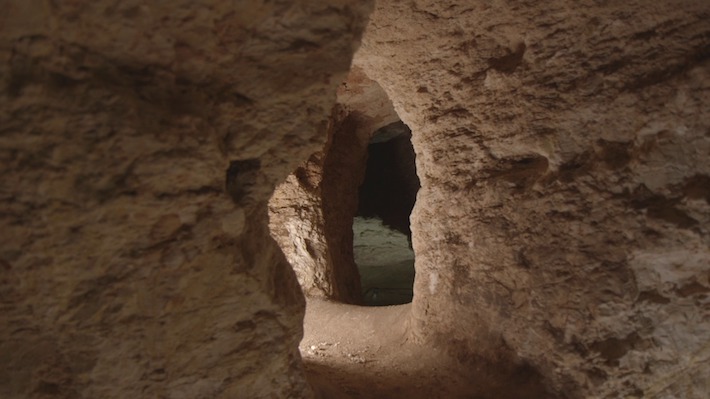 HUQOQ, ISRAEL—The Jerusalem Post reports that archaeologists working at the site of Huqoq near the Sea of Galilee have excavated an underground complex likely used by Jewish rebels in the first and second centuries A.D. Although the site has been known for nearly 50 years, it has never been properly excavated and its full extent was not known until now. The intricate system of tunnels and hiding rooms, one of which is a huge converted cistern dating to the Second Temple period (586 B.C.–A.D. 70), was likely used by local rebels during the first revolt against the Romans in A.D. 66 and the Bar Kokhba Revolt in A.D. 132–136. For decades, archaeologists have questioned whether the Bar Kokhba, or Second Revolt, took place in the Galilee, explained Israel Antiquities Authority archaeologists Uri Berger and Yinon Shivtiel. “It is not certain that the complex was used for hiding and escaping during the Second Revolt, but it does appear to have been prepared for this purpose,” they said. “We hope future excavations will bring us closer to the answer.” To read more about the Jewish community at Huqoq and the elaborate mosaics discovered in the synagogue there, go to "Mosaics of Huqoq."
HUQOQ, ISRAEL—The Jerusalem Post reports that archaeologists working at the site of Huqoq near the Sea of Galilee have excavated an underground complex likely used by Jewish rebels in the first and second centuries A.D. Although the site has been known for nearly 50 years, it has never been properly excavated and its full extent was not known until now. The intricate system of tunnels and hiding rooms, one of which is a huge converted cistern dating to the Second Temple period (586 B.C.–A.D. 70), was likely used by local rebels during the first revolt against the Romans in A.D. 66 and the Bar Kokhba Revolt in A.D. 132–136. For decades, archaeologists have questioned whether the Bar Kokhba, or Second Revolt, took place in the Galilee, explained Israel Antiquities Authority archaeologists Uri Berger and Yinon Shivtiel. “It is not certain that the complex was used for hiding and escaping during the Second Revolt, but it does appear to have been prepared for this purpose,” they said. “We hope future excavations will bring us closer to the answer.” To read more about the Jewish community at Huqoq and the elaborate mosaics discovered in the synagogue there, go to "Mosaics of Huqoq."
Bar Kokhba–Era Complex Excavated Near Sea of Galilee
